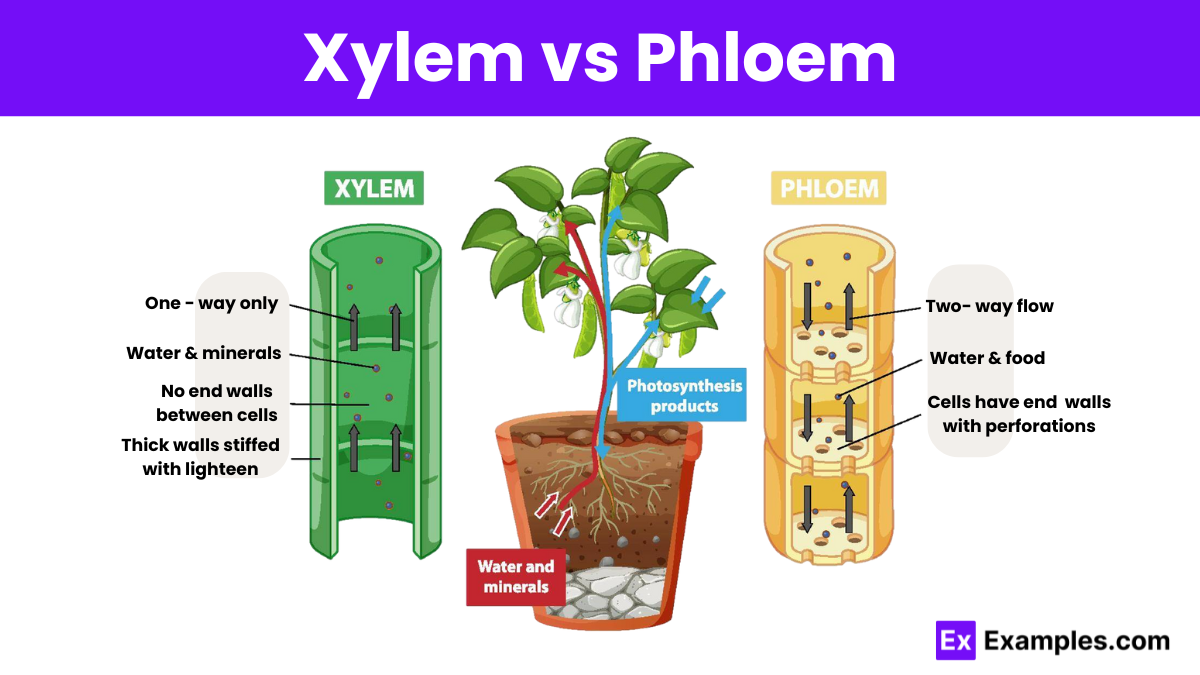What is the primary function of xylem?
Transport of sugars
Transport of water and minerals
Photosynthesis
Reproduction

Plants are complex organisms that thrive through intricate systems, much like the circulatory system in animals. Two pivotal components of this botanical circulatory system are the xylem and phloem tissues, each playing a crucial role in sustaining plant life. These vascular tissues not only facilitate the movement of essential substances but also embody the remarkable adaptability and efficiency of plants. Let’s delve into the distinctive features and functions of xylem and phloem, shedding light on their critical roles in the plant kingdom.
Xylem serves as the plant’s hydration conduit, channeling water and dissolved minerals from the roots to various parts of the plant. Envision it as a series of interconnected pipes, each designed to conduct water efficiently upwards against gravity. Xylem’s structure is a testament to its function; composed of dead, hollow cells, it forms a rigid framework that supports the plant and facilitates water transport. This tissue is not just a passive channel but a dynamic system that adapts to the plant’s needs, ensuring that every leaf and stem receives the life-sustaining water it requires.
Contrasting yet complementing the xylem is the phloem, the nutrient superhighway of the plant. Phloem distributes the sugars produced during photosynthesis from the leaves, where they’re generated, to parts of the plant where they’re needed or stored. This includes growing regions like buds and roots, as well as storage structures like fruits and tubers. The phloem’s bidirectional flow allows it not only to distribute nutrients but also to send chemical signals throughout the plant, coordinating growth and response to environmental changes.

| Feature | Xylem | Phloem |
|---|---|---|
| Primary Function | Transports water and dissolved minerals from roots to other plant parts. | Transports sugars and other nutrients from photosynthetic parts to the rest of the plant. |
| Direction of Transport | Primarily upwards, from roots to leaves. | Bidirectional, can move substances up and down the plant. |
| Components | Composed of vessels, tracheids, xylem parenchyma, and xylem fibres. | Consists of sieve tube elements, companion cells, phloem fibres, and phloem parenchyma. |
| Cell Type | Mostly composed of dead cells, except for xylem parenchyma. | Composed of living cells, except for phloem fibres. |
| Cell Wall | Thick walls, often lignified, providing structural support to the plant. | Thinner walls compared to xylem, not lignified. |
| Contribution to Plant Structure | Provides mechanical support and rigidity, contributing to the plant’s structural integrity. | Primarily involved in nutrient distribution, with lesser role in support. |
| Substances Transported | Water, mineral nutrients. | Organic nutrients (primarily sucrose), hormones, and some mineral ions. |
| Growth | Associated with primary and secondary growth, contributes to the thickening of plant structures. | Mainly associated with primary growth, with limited contribution to secondary growth. |
| Visibility | Often visible in the form of wood and tree rings in woody plants. | Less visibly distinct, often embedded within the plant tissue. |
Phloem transports sugars and nutrients from leaves to growth and storage areas in plants, facilitating essential metabolic functions.
Xylem flows only upwards from roots to leaves, while phloem’s flow is bidirectional, supporting various plant needs.
Xylem is specialized for water transport, moving water and minerals from roots to the rest of the plant.
Xylem’s primary role is to conduct water and dissolved minerals from roots to stems and leaves, supporting plant hydration.
Text prompt
Add Tone
10 Examples of Public speaking
20 Examples of Gas lighting
What is the primary function of xylem?
Transport of sugars
Transport of water and minerals
Photosynthesis
Reproduction
Which of the following tissues is responsible for transporting food produced by photosynthesis?
Xylem
Phloem
Epidermis
Cortex
Xylem vessels are composed of:
Living cells
Both living and dead cells
Only parenchyma cells
Dead cells
Which component of the vascular system moves substances in both directions?
Xylem
Cambium
Phloem
Sclerenchyma
What structural feature distinguishes xylem from phloem?
Presence of companion cells
Lignified cell walls
Lack of sieve plates
Perforation plates
Which type of plant cell is commonly found in phloem tissue?
Tracheids
Vessel elements
Sieve tube elements
Fibers
The movement of water through xylem is primarily driven by:
Gravity
Capillary action
Transpiration
D)
Which process is associated with phloem transport?
Transpiration
Translocation
Photosynthesis
Germination
Xylem and phloem together form:
Vascular bundles
Epidermal layers
Ground tissue
Meristematic tissue
Which cells in phloem assist in loading and unloading sugars?
Companion cells
Sieve cells
Tracheids
Vessel elements
Before you leave, take our quick quiz to enhance your learning!

